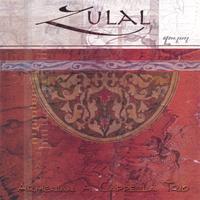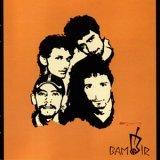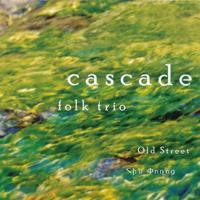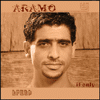
* (1 Star)
When word first leaked out of collaboration between world renowned violist Kim Kashkashian and contemporary Armenian composer Tigran Mansuryan, I began to count the days until the official CD release. When news filtered in that the recording was going to be released on one of the world’s premier record labels in ECM New Series, I frothed at the mouth. Add to that the fact songs by Komitas were also going to be featured; this CD had all the markings of a classic recording. Oh, how looks can be deceiving.
Hayren is a collection of short pieces either written or arranged by Tigran Mansuryan, one of Armenia’s most recognizable living composers. The pieces Mansuryan chooses to arrange are by none other than Komitas. For the most part, Kashkashian braves along playing her viola with Mansuryan on the piano along with percussionist Robyn Schulkowsky. When Kashkashian is featured, as in Mansuryan’s “Duet for Viola and Percussion”, the audience is reminded just how much of a positive impact the talented violist can have with such an ambitious piece. The remaining 12 tracks are all Komitas compositions/arrangements that Mansuryan has re-arranged for the purposes of this recording. If the recording were that simple, we may have something here. However, somewhere along the line, a terrible decision was made to let Mansuryan actually sing the Komitas pieces and thus we have a major disaster of a recording. As Mansuryan points out in the liner notes, “I am not a singer”.
The piece that should be center stage in “Hayren” is actually Mansuryan’s own “Duet for Viola and Percussion”, which is at the end of the CD. Unfortunately, the road to get there is marred by an artistic gamble that fails miserably and ultimately sinks the overall CD. The wager in question is having Mansuryan sing Komitas in an off key, warbled, and untrained manner. The price at stake is Mansuryan’s reputation and perhaps the music of Komitas in the public eye as well. Mansuryan asks the listener to imagine that his vocal interpretation of Komitas, off key and all, is the way that “common folk” would have sung it in the day. While this may be true, why is this relevant or even appealing to a music lover or a consumer looking for works by Komitas? While it is certainly admirable that Mansuryan takes this approach, it doesn’t mean that the concept has to be successful or even interesting. Sure, I’ve tried to sing Komitas in the shower at times, but, does that mean that someone would shell out $18 to hear it and embrace it as the voice of the people? I doubt it.
There are several angles at play with this ECM recording. There is the statement that ECM has put out claiming that “this is Mansuryan’s artistic interpretation of Komitas, showing us the rich soil from where Mansuryan’s own music has sprung”. Then, there is the reaction that most people in the Armenian community will have once “Hayren” is brought to their attention, which is, “because this recording is on a major non- Armenian classical/world music label, it has to be good, or even profound for that matter.” Finally, the dopey general press such as iclassics.com has curiously stated that, “it is precisely the heartfelt "artlessness" of his (Mansuryan’s) delivery that draws out the charm of the material, which returns it to "folk music", in the best sense”. None of these statements actually are truly accurate and are open to fierce debate.
To answer some of these statements, one has to keep in mind that when a label knows they have a stinker, they have to invent creative ways to get around that and sell the CD to the public. The iclassics statement is among the most creative and preposterous. Substitute “tasteless” for “artlessness” and you have a more accurate picture. There is no charm in listening to a man that is out of tune sit and tries to vocally interpret Komitas for more than 20 minutes. If I wanted to hear “artlessness”, I would go back to the original 1912 recordings of these songs sung by Komitas himself. The original recording has been made available on the fine Traditional Crossroads label. While the Armenian community is usually muted in criticizing a “famous Armenian” in public, Mansuryan’s unfortunate decision blew an opportunity for wider audiences to hear one of our generation’s great violists interpreting Komitas straight on. Typically in the music world, promoters or the musicians themselves mask their shortcomings in a piece of work by creating a myth that the music is almost too sophisticated to understand, even if it sounds terrible. “Don’t worry, you don’t like it because you don’t understand it, but, it is great and you should know that if you were sophisticated like us” is the usual line. But, to paraphrase Duke Ellington when asked what good music is, “Good music is good when you like it and bad is when you don’t”.
Over the last decade or so, ECM New Series has become the most innovative and stylish classical record label in the world. They’ve been around since 1969, but it is recently that they have really emerged as an industry force. Run by the trailblazing Manfred Eicher, ECM has put out fascinating works and in turn has become one of the larger record companies in the game. I must admit, I am a huge fan of the label and appreciate the fact that they are unafraid to put out recordings that may not sell. By having a strong track record, Eicher has wisely branded ECM as a daring and avant garde music label characterized by minimalist artwork and photography for its CD design. Anything that is put out on ECM is immediately considered a legimate project. The mere fact that Mansuryan’s works will be featured by ECM in the present and future is exciting indeed- for him and his fans. Word has spread that there is more Mansuryan to come on ECM later this year. Good for him.
That being said, it is generally accepted that while Komitas is revered by Armenians worldwide, his works are not well represented in the traditional musical catalogs. Thus, it is safe to assume that for many outside of our Armenian circle, their first introduction of Komitas will be through this new ECM release of Mansuryan’s interpretations of Komitas. I doubt that many people will be silly enough to buy into the “gimmick” of this album being representative of the “common man singing folk tunes” and then passing it off as Komitas. Remember, Komitas had Armen Shahmuradian interpreting his works on record, not an off tune peasant in the field. “Hayren” is just a bad album that wastes a major talent in Kim Kashkashian and diverts attention away from the real gem on this album, Mansuryan’s own “Duet for Viola and Percussion”. Most people won’t even keep the CD long enough in their players to get to that piece. Too bad, really.
Remember, the French think that the comedy of Jerry Lewis is “high art”. I guess it depends on your point of view.










